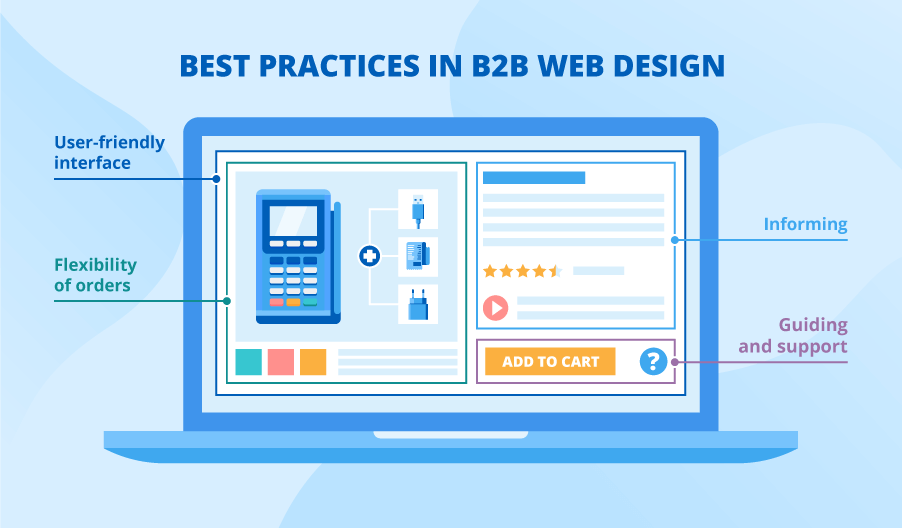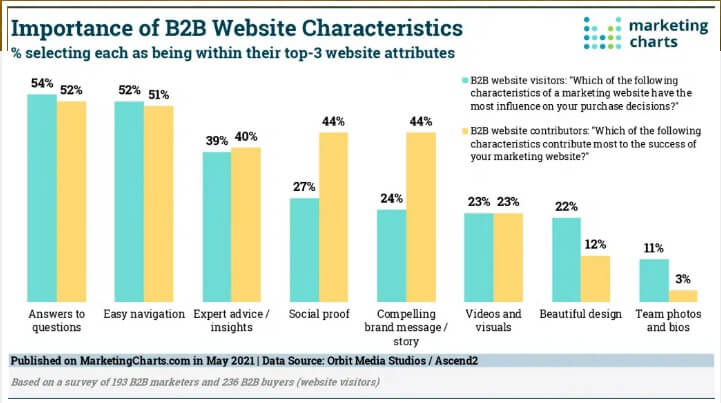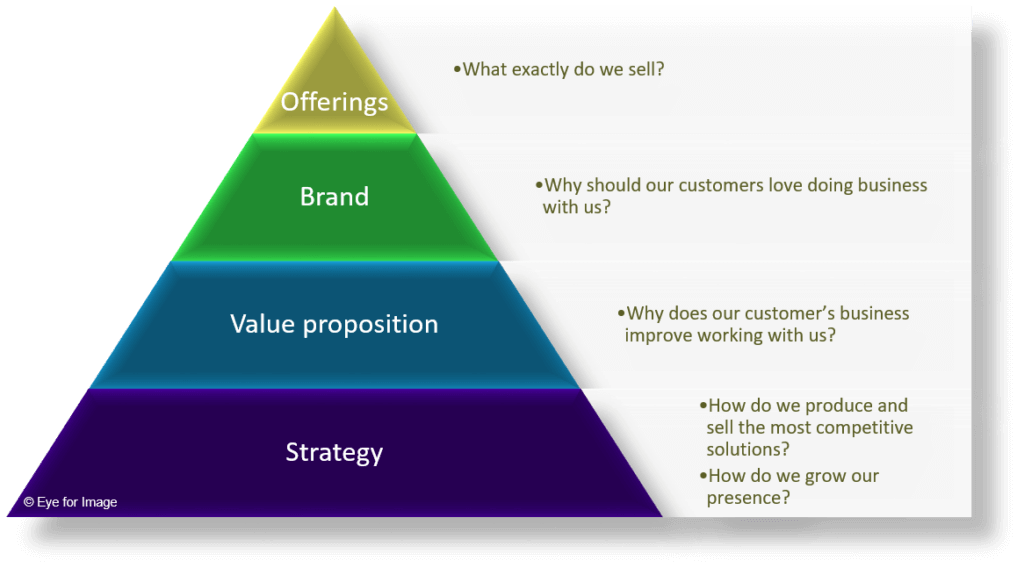10 Keys to a Great B2b Website Strategy

I know what you’re thinking… another article on B2B strategy?
But wait, there’s more to this than you might guess. We’re diving deep into the essentials of a killer B2B website strategy that actually delivers.
A successful B2B website strategy integrates several critical elements. It starts with comprehensive market research to deeply understand your target audience and their needs. Clear branding and messaging ensure that your website communicates what your company stands for and what it offers.
The strategy should also include an optimized user experience with intuitive navigation and responsive design. Effective content that addresses the pain points of your market, combined with strong SEO practices, helps your site attract the right visitors.
Conversion optimization tools and strategies are essential to turn these visitors into leads and customers, while analytics are used to track performance and adapt strategies to enhance outcomes.
B2B Website Strategy Framework
1. Take a Closer Look at Your Brand
Your B2B web strategy starts with solid branding. Ensure your product or service aligns with your target audience’s needs. This is not just about logos but how your business communicates its value and positions itself in the market. Strong branding builds trust and leads to better conversion rates.
Example: A b2b website for a software company should focus on positioning itself as a reliable partner for enterprise-level web development.
2. Create a Great UX and Mobile Experience
Optimizing the user experience is key to b2b marketing success. Focus on responsive design that works seamlessly across devices, particularly mobile. In B2B, a clear and smooth UX helps build trust and boosts conversion rates. Make sure navigation is intuitive and content loads fast.
Tool: Google’s Mobile-Friendly Test ensures your site is optimized for all devices.

3. Defining Your Target Audience
Identifying your buyer persona and understanding their pain points is essential. Tailor your messaging to their stage in the sales funnel. Whether they’re looking for general information or ready to make a purchase, your content should address their specific needs.
Example: Create different landing pages for users researching versus those ready to contact your sales team for a demo.

4. Integration of Lead Generation Tools
Integrate tools that encourage lead generation through calls to action and landing pages. These should guide users from initial engagement to a potential sale. Simplify the process for them to contact your sales team or sign up for more information.
Tool: HubSpot is great for creating smart CTAs that adapt to user behavior.
5. B2B Marketing Plan
A strong b2b marketing plan includes content creation that answers your audience’s questions at every stage of their journey. Blog posts, whitepapers, and case studies should cater to their evolving needs. Also, social media can help expand your reach and build trust.
Example: Create educational content that positions your company as an expert while promoting your product or service subtly.
6. Don’t Forget the SEO
SEO helps your website rank higher on search engines, bringing organic traffic. Use keyword research to align your content with what your target audience is searching for. Focus on optimizing your pages with industry-specific keywords.
Example: Use tools like SEMrush to find keywords related to b2b websites and web development for better ranking.
7. Make It Easy to Do Business with You
Your website should make it simple for visitors to contact you, find pricing, or request a demo. Adding clear calls to action at every stage of the buyer journey helps push them toward conversion. Always offer clear steps like “Schedule a Call” or “Request a Demo.”
Tool: Unbounce helps create conversion-focused landing pages and CTAs.

8. Track and Personalize the Buyer’s Journey
Tracking and personalizing the buyer journey allows you to cater to your visitor’s needs in real-time. Use tools like Trendemon to follow users through the site and personalize content to their stage in the sales funnel.
When using Trendemon to track and personalize the buyer’s journey, it analyzes user behavior in real-time to provide content recommendations based on their activity.
For example, if a visitor engages with several blog posts on a particular topic, Trendemon identifies their interest and dynamically suggests related product or service pages, tailored to their current stage in the sales funnel.
This automation ensures that the content aligns with the visitor’s specific needs, helping to guide them towards conversion efficiently.
9. Get the Buyer to Take Action
Encourage action at every point in the process. Provide clear conversion points like demos, free trials, and landing pages with compelling calls to action. B2B websites need to offer easy off-ramps into sales conversations through buttons like “Contact Sales” or “Download Case Study.”
Tool: Hotjar can help you see how users interact with your site and where they drop off, letting you optimize for more conversions.
10. Test and Optimize with A/B Testing
A/B testing is essential for improving conversion rates on B2B websites. By comparing two versions of a page or calls to action, you can identify which performs better. This allows you to optimize your website continually.
Example: Test different versions of a landing page, changing the layout, headline, or button text to see which one gets more leads.
Tool: Use Google Optimize or Optimizely to run A/B tests and track the impact on your sales funnel and lead generation efforts.
Successful B2B Companies and Their Strategies
1. HubSpot
HubSpot was founded in 2006, starting as an inbound marketing software provider. The company grew rapidly by offering valuable content like blogs, eBooks, and webinars, which attracted leads through content marketing.
Their focus on lead generation tools and free trials helped them evolve into a full marketing and CRM platform. What really accelerated their growth was their ability to educate the market about inbound marketing, turning visitors into loyal customers through their all-in-one solution for growing businesses.
2. Slack
Slack began in 2013 as a tool developed for internal communication at a gaming company. Its evolution into a standalone B2B product happened when the team realized its broader potential.
What made a significant difference was their focus on simplicity and integration, making Slack easy to adopt in businesses of all sizes. Word of mouth and freemium models (offering free basic versions) fueled their rapid growth. They also prioritized user experience, making collaboration seamless, which led to millions of daily active users.
3. Salesforce
Salesforce, launched in 1999, pioneered the cloud-based CRM model. They revolutionized the way businesses handled customer relationships by offering software as a service (SaaS) rather than on-premise installations.
What significantly boosted their growth was their focus on scalability and customization for businesses of any size, paired with their constant innovation (like adding AI-powered tools).
Over time, they expanded into a comprehensive B2B web strategy, helping companies track customer interactions across multiple platforms.
Each of these companies grew by identifying market gaps and providing solutions that aligned with their target audience’s pain points. They leveraged content marketing, user experience, and lead generation strategies to scale rapidly.